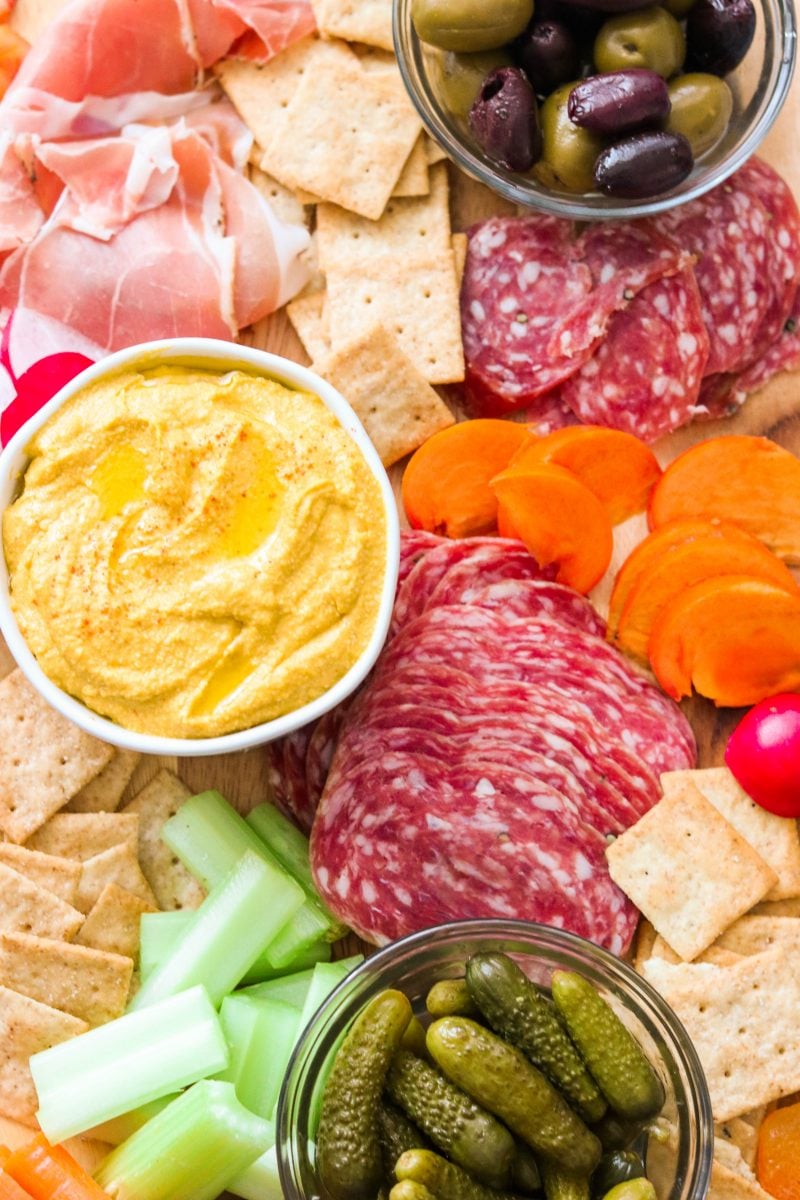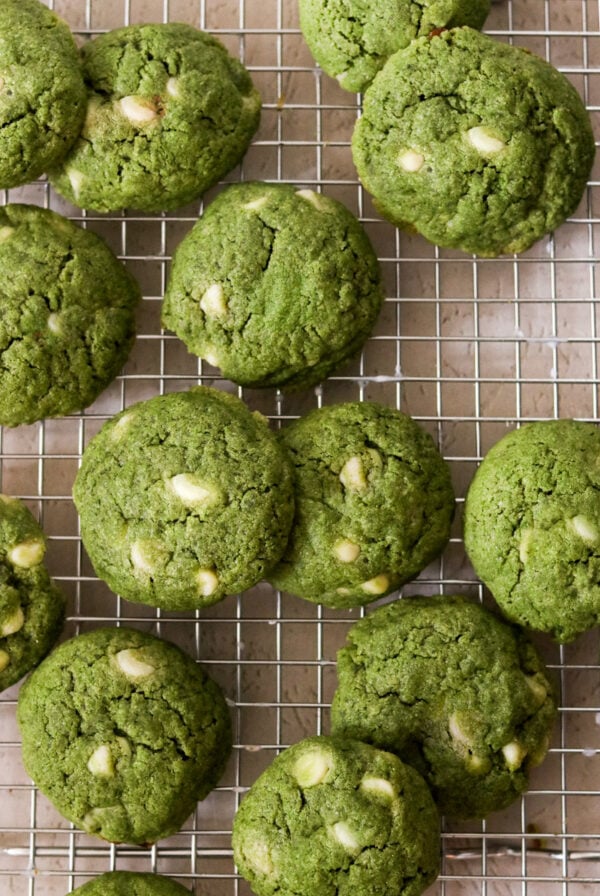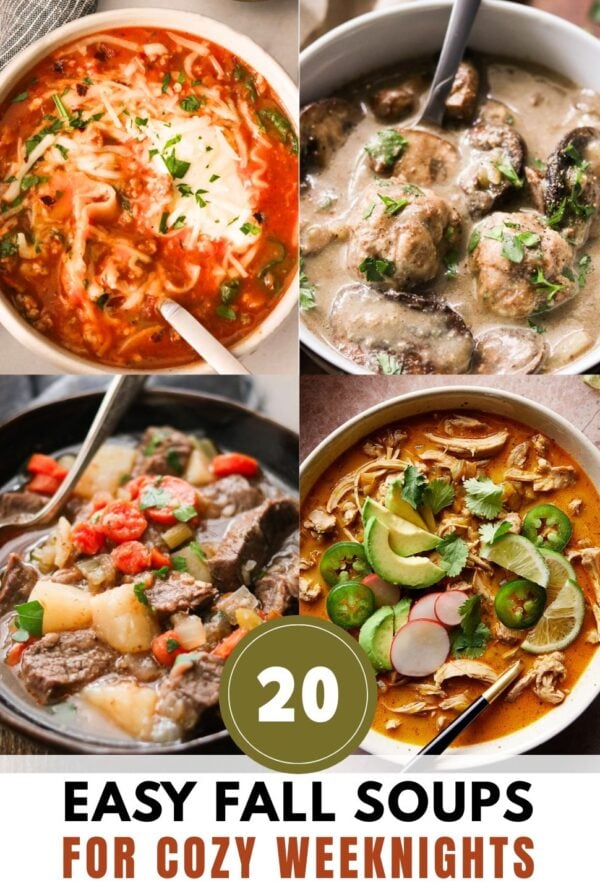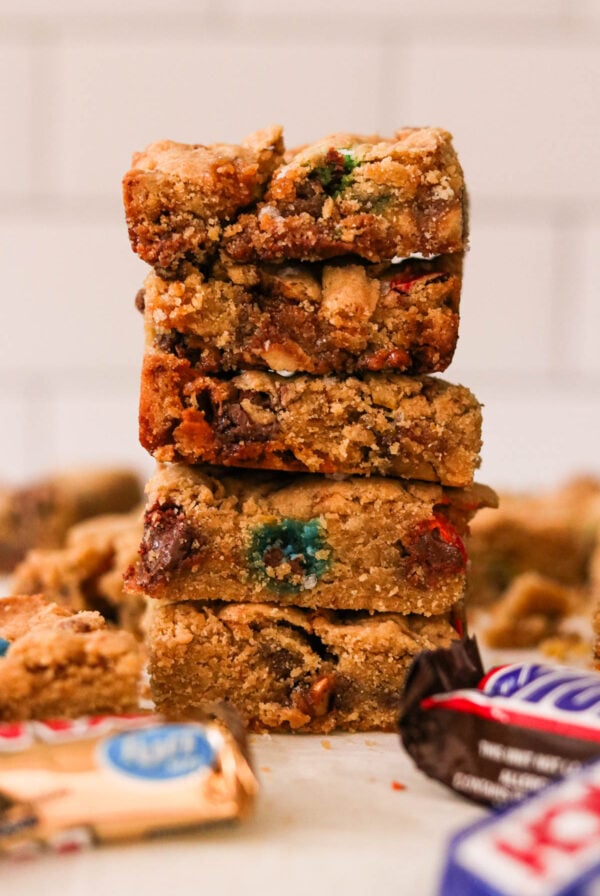This post may contain affiliate links. Please see our disclosure policy.
Learn how to build a delicious and gorgeous paleo charcuterie board that’ll wow your guests and keep them satisfied until dinner is ready!

Are you a charcuterie board fan? Who isn’t? It’s probably the first thing I go to if I see it at a gathering or a dinner party. I just love that you can pick and choose whatever you want to eat, and you also get to try out some fancy cured meats that you’ve never had before.
I try to make a paleo charcuterie board every year for the holidays for my family. It’s such a crowd pleaser every time and buys me some time to spend on cooking while the guests fill up on the appetizers and the charcuterie board.
While a charcuterie board usually consists of cheese and meats, a paleo version omits cheese, but you have more space to load up with fun ingredients like fruits, vegetables, and dips!
What is Charcuterie?
Charcuterie (pronounced shahr-koo-tuh–ree) is a French term for preparing cured and smoked meats like salami, prosciutto, pâté, ham, and sausages. It is usually accompanied with various cheese, jam, fruits, nuts, and more, and served on a wooden board, many times at gatherings, so you can taste the various flavors with your family and friends.
It’s actually really fun to prepare, and even better to eat. It’s one of my favorite things to eat, especially over the holidays.
How to Make a Paleo Charcuterie Board
A paleo charcuterie board is actually quite easy to make. Overall, you want various textures and flavors like: salty, sweet, and sour. The best thing about it is that it’s totally customizable and it’s so easy to make it look beautiful and delicious.
Here are some components you may want to add to your paleo charcuterie board:
Meats
Cured meats are the stars of the charcuterie board and they are what many people get excited about the most. I like to have about 2-3 oz of meat per person and at least 4 different kinds of meat per board. Here are some of my favorites:
- Liver pâté: I try to include this in every board I make and it’s always the one that’s gone the fastest.
- Prosciutto or speck
- Salami like sopressata or coppa

Vegetables
I like to include a good amount of vegetables on my board, because I always crave something crunchy and refreshing as a palate cleanser after chomping on meats. Some great options are:
- Carrots
- Celery
- Cauliflower
- Radish
- Cucumber
- Broccoli
Fruits
A sweet component is important because the meat is usually on the salty side and you want to balance out the flavors. Plus, sweet ingredients like fruits add such a great color to the charcuterie board making it pop:
- Fresh fruits like persimmon, grapes, pear, pomegranate, melons, apples, and berries
- Dried fruits like mangoes, apricots, goji berries, figs, and dates
- Fruit jams like this paleo orange blueberry jam
- Chutney
Crackers
There are so many gluten free and paleo crackers out there, but my favorite and the ones I always have on hand are the Simple Mills Almond Flour Crackers. They are always loved by both paleo and non-paleo guests!

Something Sour
I always try to have something pickled or acidic on my paleo charcuterie board. It really ties all the flavors together and most people love pickled veggies and condiments! Here are some yummy options:
- Pickled or marinated olives
- Marinated peppers
- Quick picked onions
- Stone ground mustard or honey mustard
- Cornichon
- Horseradish
- Marinated artichoke hearts
Other Optional Add-Ons
These are some other components that you may want to add to your board:
- Nuts
- Dips like Paleo Pumpkin Hummus or Caramelized Onion Bacon Dip
- Fresh herbs
Tricks to a Beautiful Paleo Charcuterie Board
With all the components I mentioned above, it’s actually not difficult to make a paleo charcuterie board look beautiful. There are so many colors and textures when you bring all those ingredients together that you’ll find that they just look amazing when placed next to each other.
With that said, here are some tips and tricks to make sure your charcuterie board stands out and wows your guests:
- Choose a board. You probably have a wooden cutting board already at home. They make a great base and it’ll make it easy for guests to slice into certain meats like salami if they need to. Some fancier boards can be slate or even marble.
- Spread out each component across the board so you can easily reach for them no matter where you are sitting. For example, make sure there’s some kind of meat on all sides of the board so they are easily accessible.
- Don’t be afraid to crowd all the ingredients together. The more crowded the board looks, the better the presentation. You want to overlap the components so they look cohesive once finished.
- For wet ingredients like olives and dips, choose small bowl to put them in, and then replenish once they run low. I like to use ramekins.
- When you are done arranging, fill up any blank spaces! I really love the look of a full charcuterie board, so I like to add crackers, fruits, or even more meat if I see any blank spots.

I hope these tips to making a paleo charcuterie board are helpful for when you host your next gathering. It may see a bit intimidating at first, but charcuterie boards are actually really easy and fun to make. It’s all about having the ingredients on hand and laying them out in a beautiful, appetizing way!
Regarding other affiliate links and affiliate relationships: In order for me to support my blogging activities, I may receive monetary compensation or other types of remuneration for my endorsement, recommendation, testimonial and/or link to any products or services from this blog. Thank you for your support and understanding.





